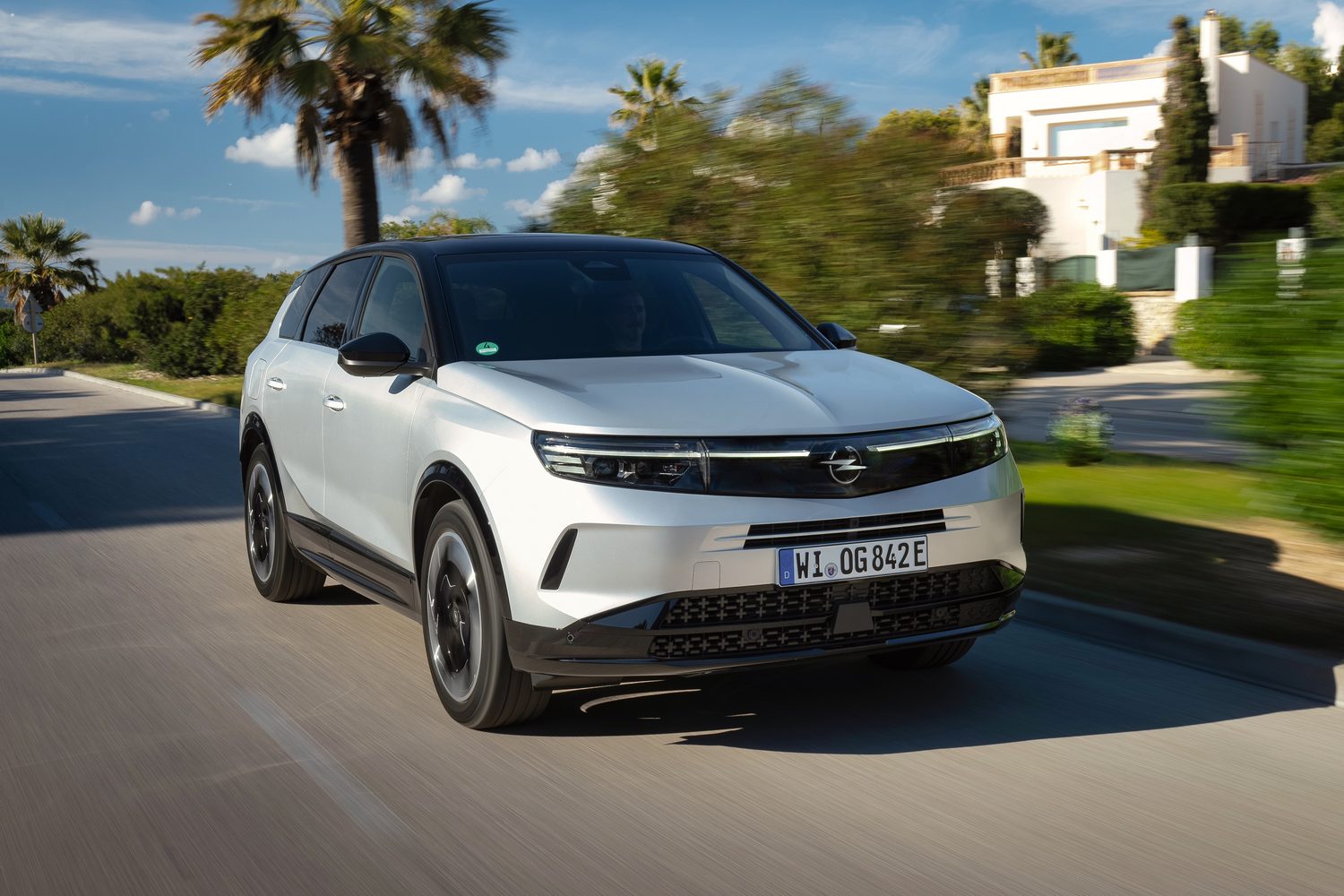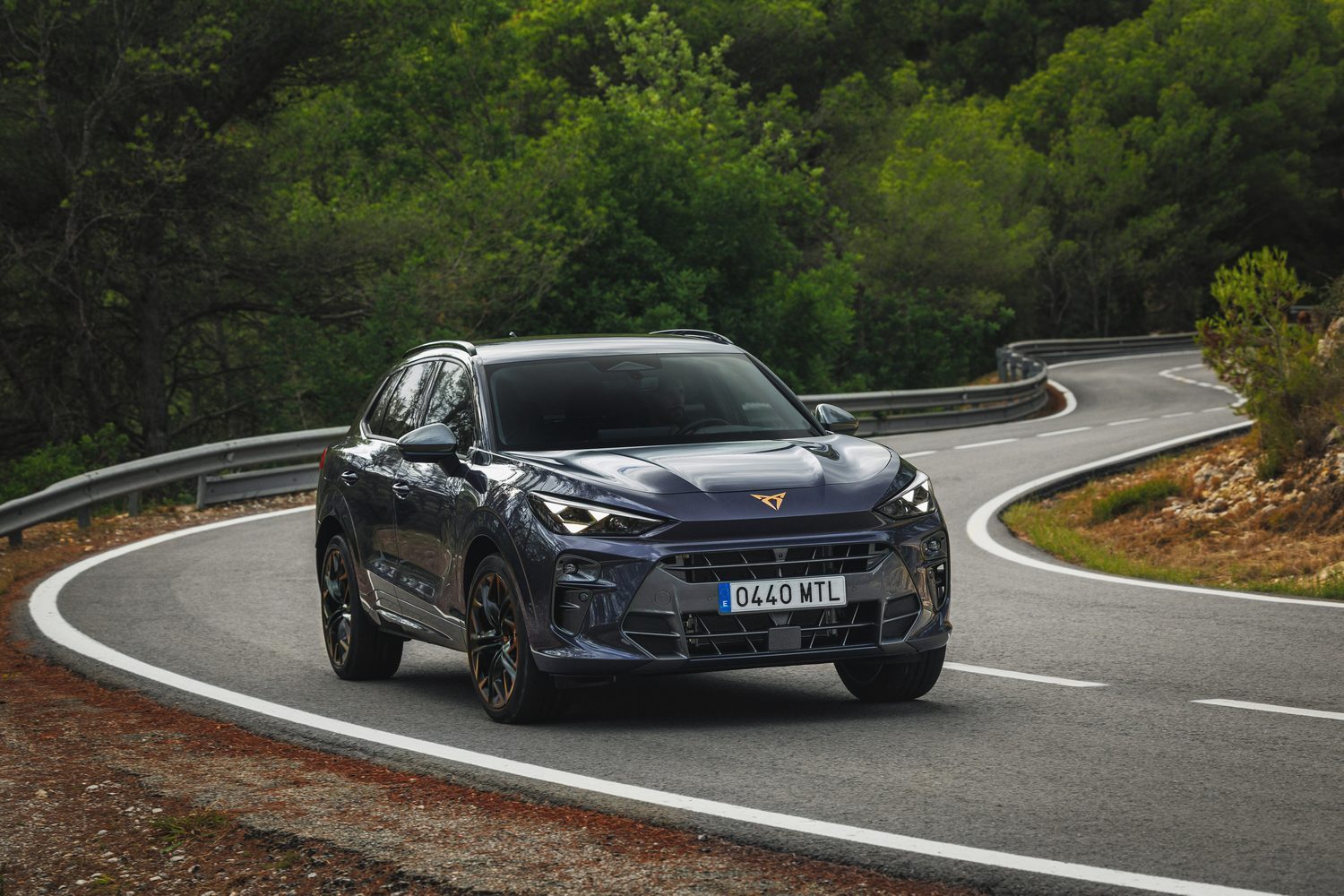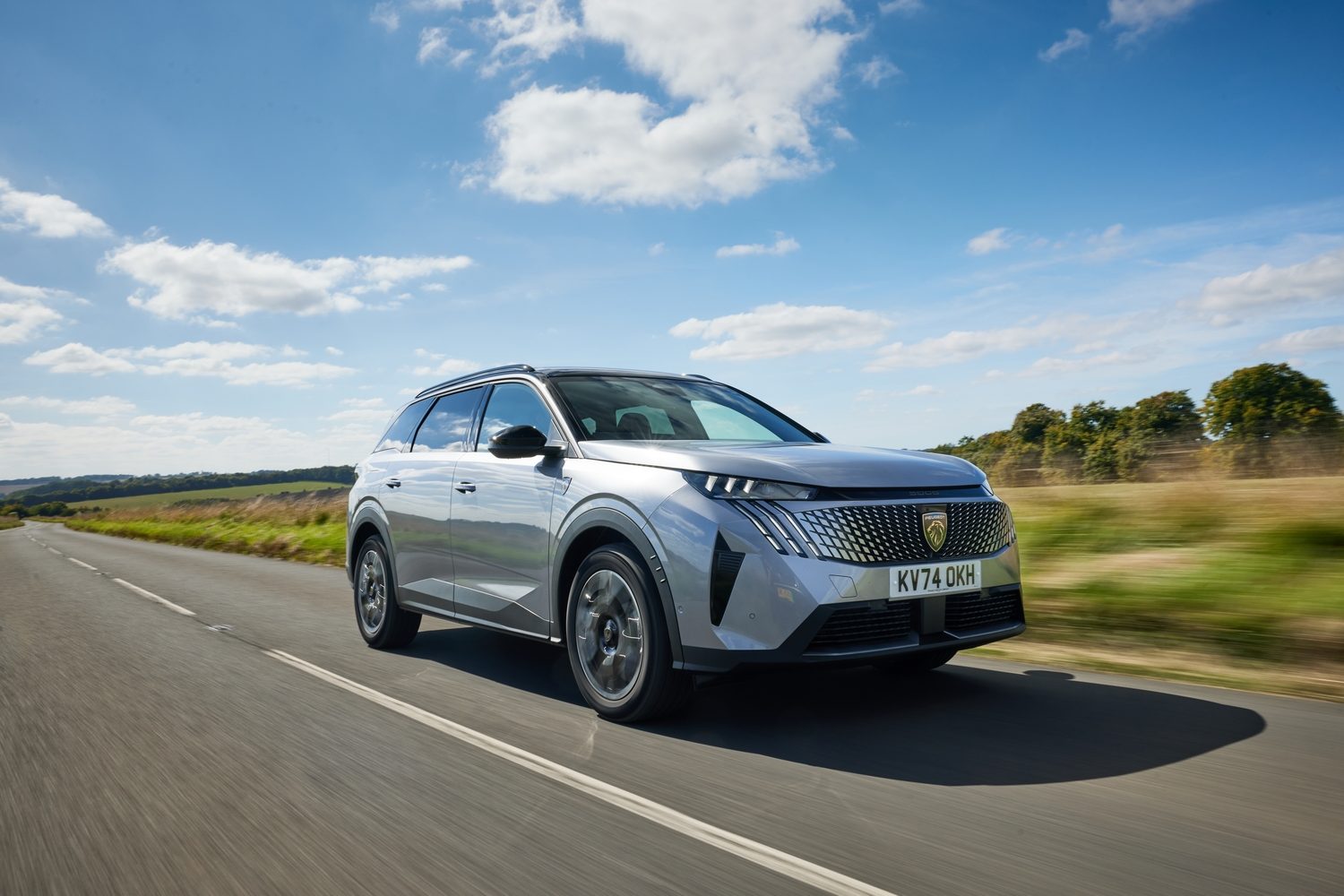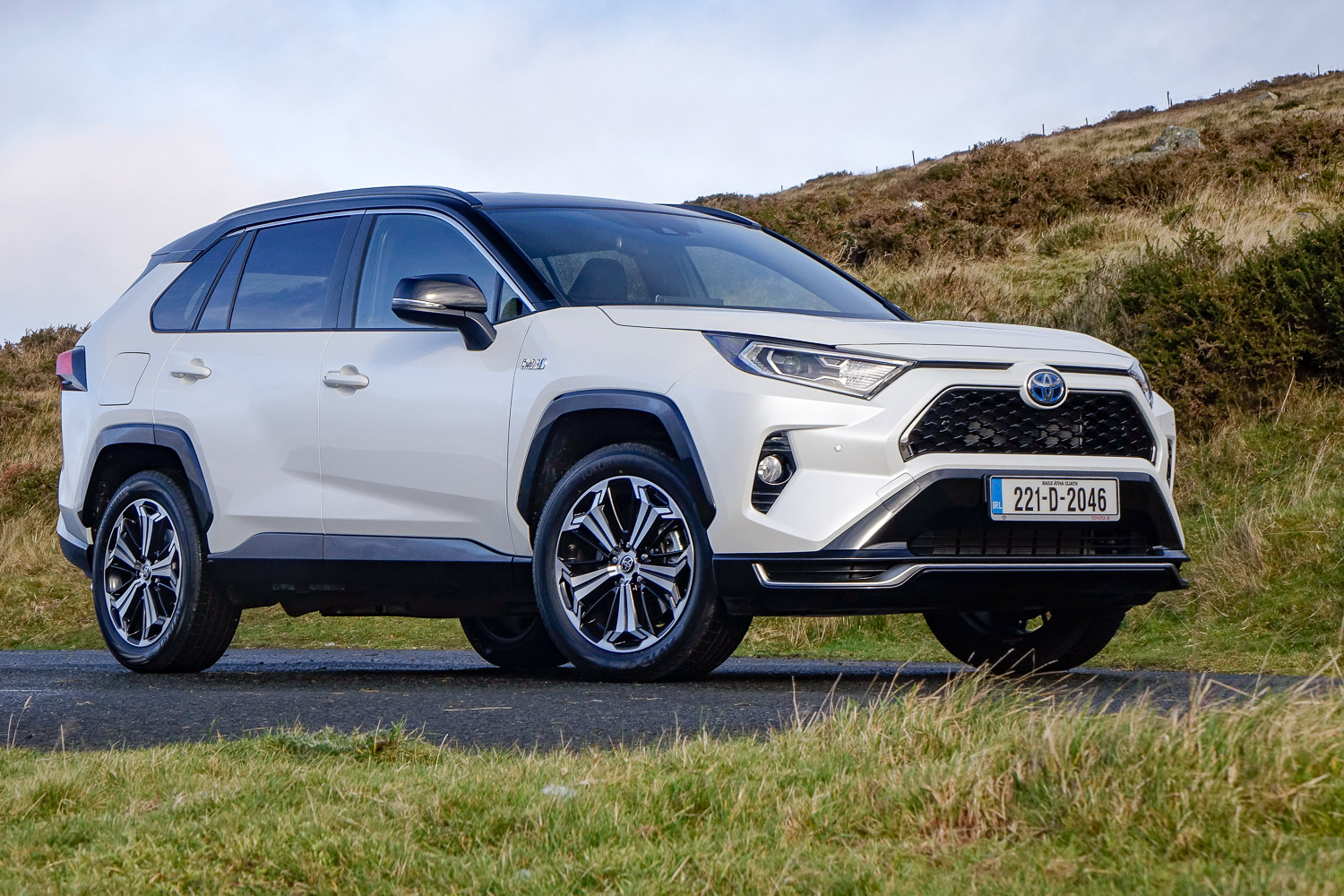Introduction to the 2025 Opel Grandland PHEV
Does the Opel Grandland still need an introduction? After all, we're pretty familiar with the new Grandland already in its hybrid and fully-electric forms. Based on the same 'SLTA-Medium' platform that's shared with Peugeot and, eventually, all of the other Stellantis group brands, the Grandland is Opel's big-and-roomy family SUV. It's a rival to the likes of the Hyundai Tucson, the Toyota RAV4, the Volkswagen Tiguan, and its own in-house cousins, the Peugeot 3008 and 5008.
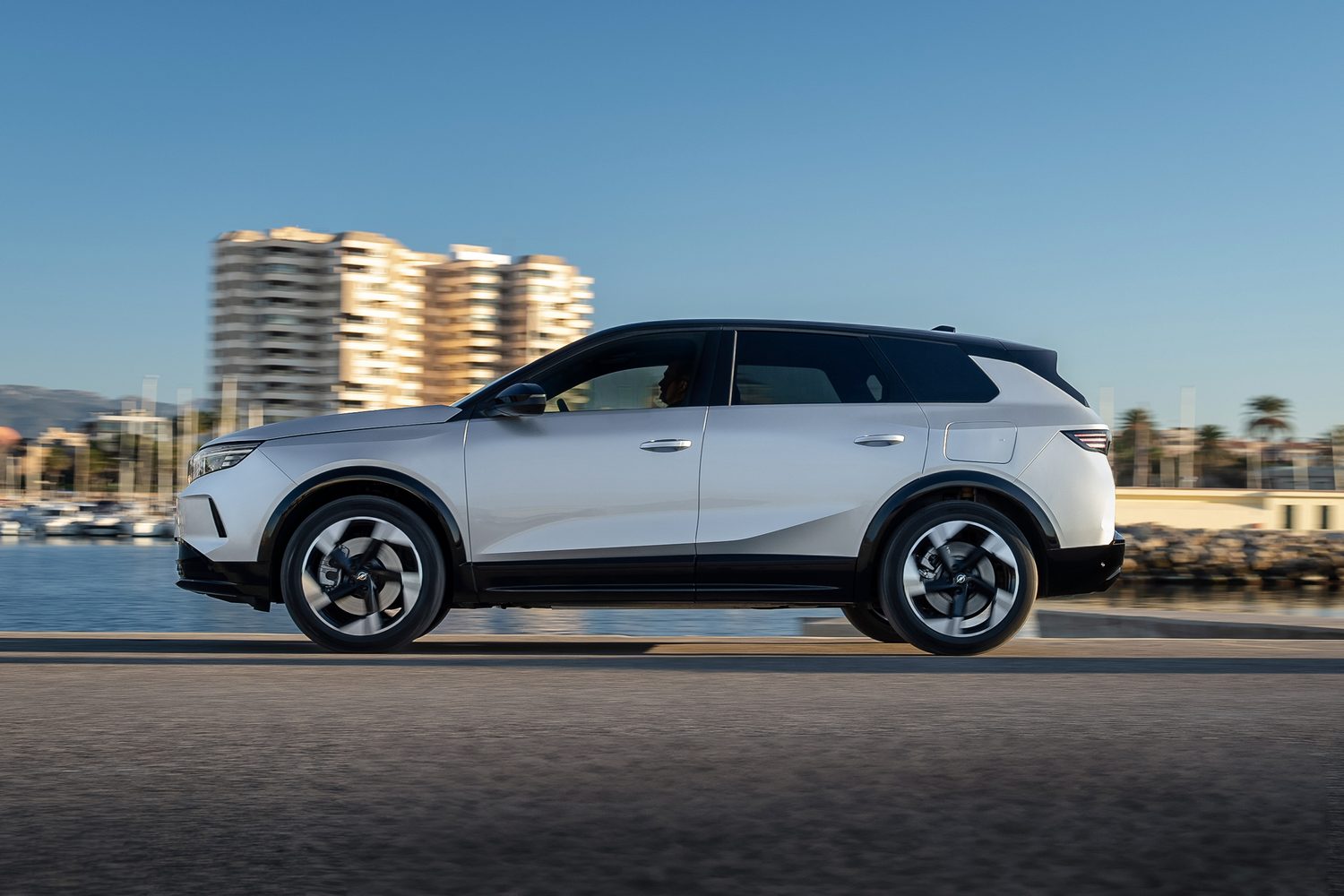
Now it's time for the Grandland to add a third string to its bow, with the arrival of this plug-in hybrid version, which gives you a decent electric range on a full charge, but with the reassurance of a petrol engine and a fuel tank for when you need to take on longer trips. It's a mix that's immensely popular with Irish car buyers right now, so will this new version give the Grandland more of a foot in the door with customers looking for the potential sweet spot between electric and hybrid power?
Pros & Cons of the 2025 Opel Grandland PHEV
Pros: Handsome exterior, roomy cabin, decent quality and electric range
Cons: Could do with being plusher, no fast-charging capability
Exterior & Design of the 2025 Opel Grandland PHEV
• Styling is more subdued than in equivalent Peugeot
• Uses lighting signatures instead of chrome highlights
• You need to get up close to see the subtle details
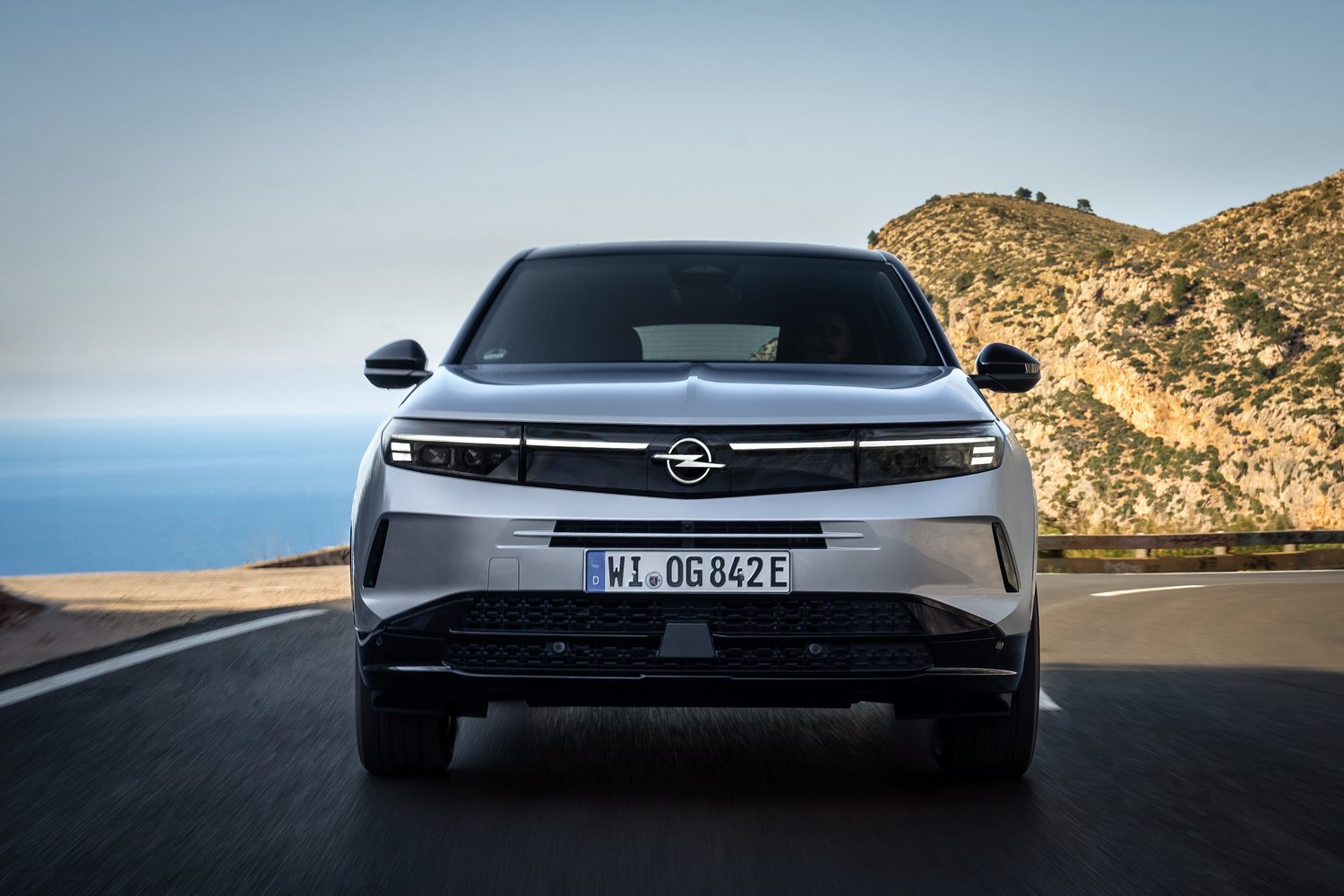
It's not as immediately stylish as its Peugeot cousins, but the Grandland has a kind of quiet handsomeness, which looks much better in person than it does in photos. It's not a small car, this. In fact, the key dimensions are:
Length: 4,650mm
Width: 1,905mm
Height: 1,665mm
Wheelbase: 2,784mm
At the front, there's a new interpretation of the Opel 'Vizor' grille, which instead of being a sweep of black plastic is actually a sweep of see-through plastic, with the headlights, the Opel logo and a full width LED light bar all tucked behind a translucent panel.
This is in part because Opel is keen to show off that it's not using chrome anymore (because of the fact that the process of chrome-plating items is especially nasty from an environmental point of view). Instead, you get that full-width light bar as well as a light-up Opel badge, and of course the subtle three-bar LED lighting signature of the headlights. On our test car, those used the latest 'Intellilux' Matrix LED tech, which means a whopping 50,000 pixels of lighting power to direct at the road. Brace your retinas...
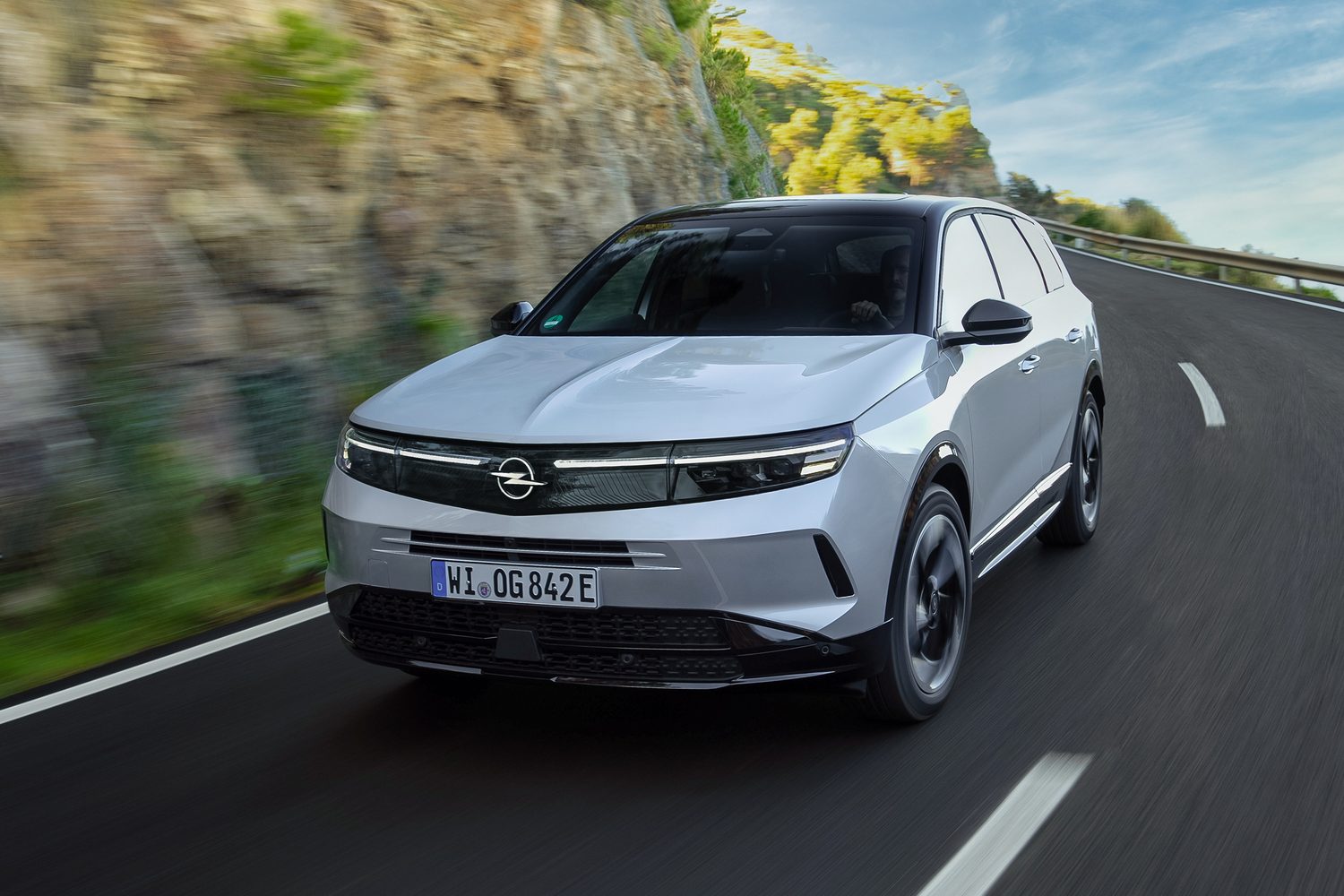
Down the sides of the Grandland, there's a large feature line, which begins just behind the front wheel arch, and continues, rising slightly, through to the beginning of the rear wheel arch. It removes some of the visual bulk from the side of the car. Towards the back, there's a forward-leaning roof pillar, finished in body colour, which is possibly the only visual cue taken from the previous Grandland.
At the rear, the Grandland name is embossed into the tailgate, while above there's another LED light bar and the word Opel illuminated. Our car was finished in 'Grey Aluminium' silver paint with a contrasting black roof, and it looked smart. There are more tempting colour choices though, including a rather handsome 'Spektrum Blue' which is actually closer to green, and a bronze 'Impact Copper' which has rose-gold tones. You can of course also choose plainer white, black and metallic-dark grey colours.
Alloy wheels of 19-inch diameter come as standard, with 'diamond-cut' versions for the GS spec.
Interior, Practicality, Tech & Comfort of the 2025 Opel Grandland PHEV
• Handsome cabin with high levels of quality
• Excellent front seats
• Could do with more soft materials
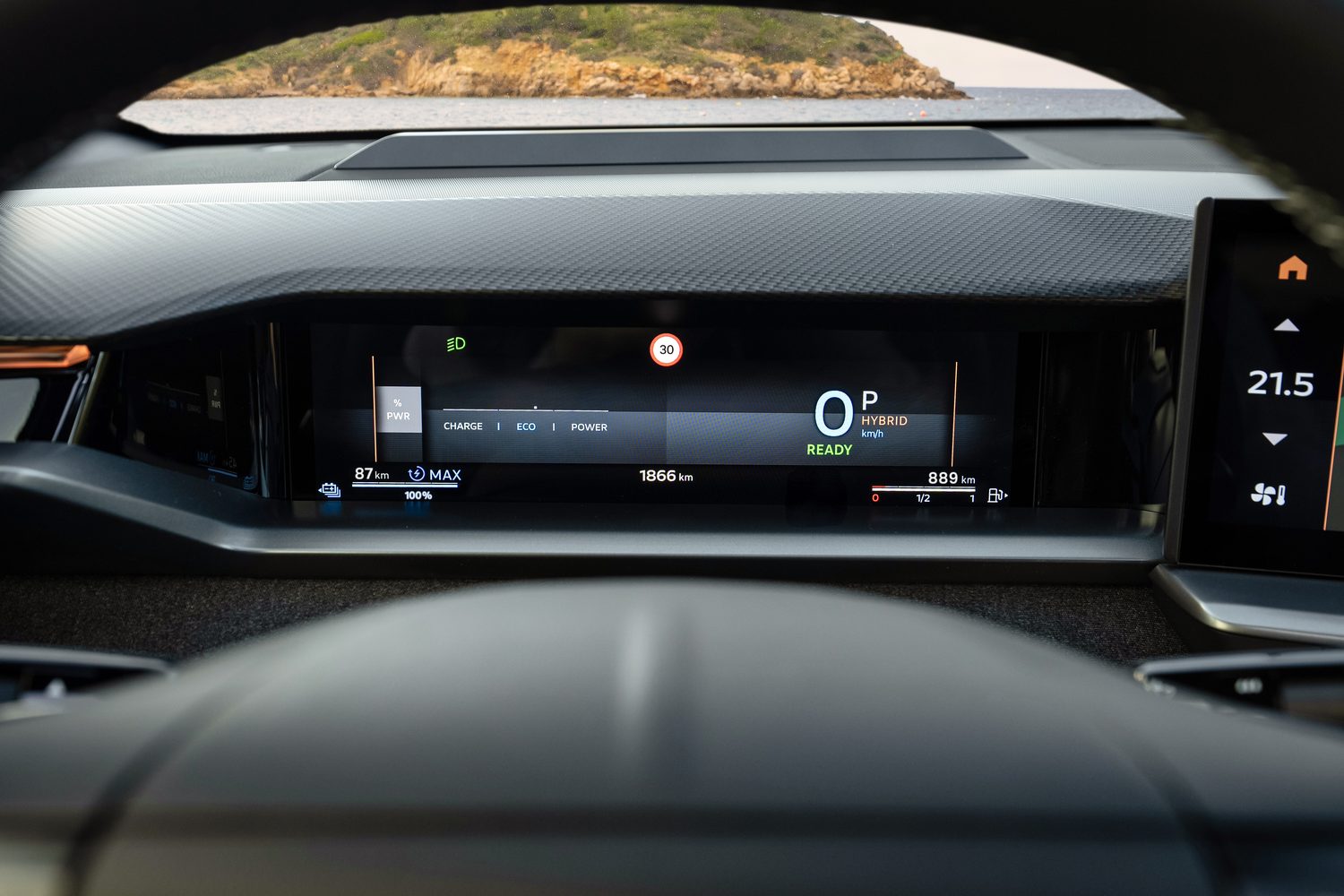
Anyone trading up to this Grandland from the previous model might need a dose of smelling salts such will be the shock. The previously Grandland had a rather dull, uninspired cabin, but this new one is far better inside.
It's roomy, with plenty of space and comfort up front thanks to excellent seats (approved of by the German association for bad backs, Aktion Gesunder Rucken) and some 36 litres of storage space dotted about the cabin. There's a large and usefully deep (and air conditioned) storage area under the butterfly armrest in the front, and more storage under a sliding cover which is also home to two USB-C sockets and a wireless charging pad. The door bins are a little on the narrow side, but they're fine.
The dashboard is dominated by the central touchscreen, which stretches to a full 16 inches in a GS-spec version such as our test car, but the shallow proportions mean that it's not overly distracting when you're driving.
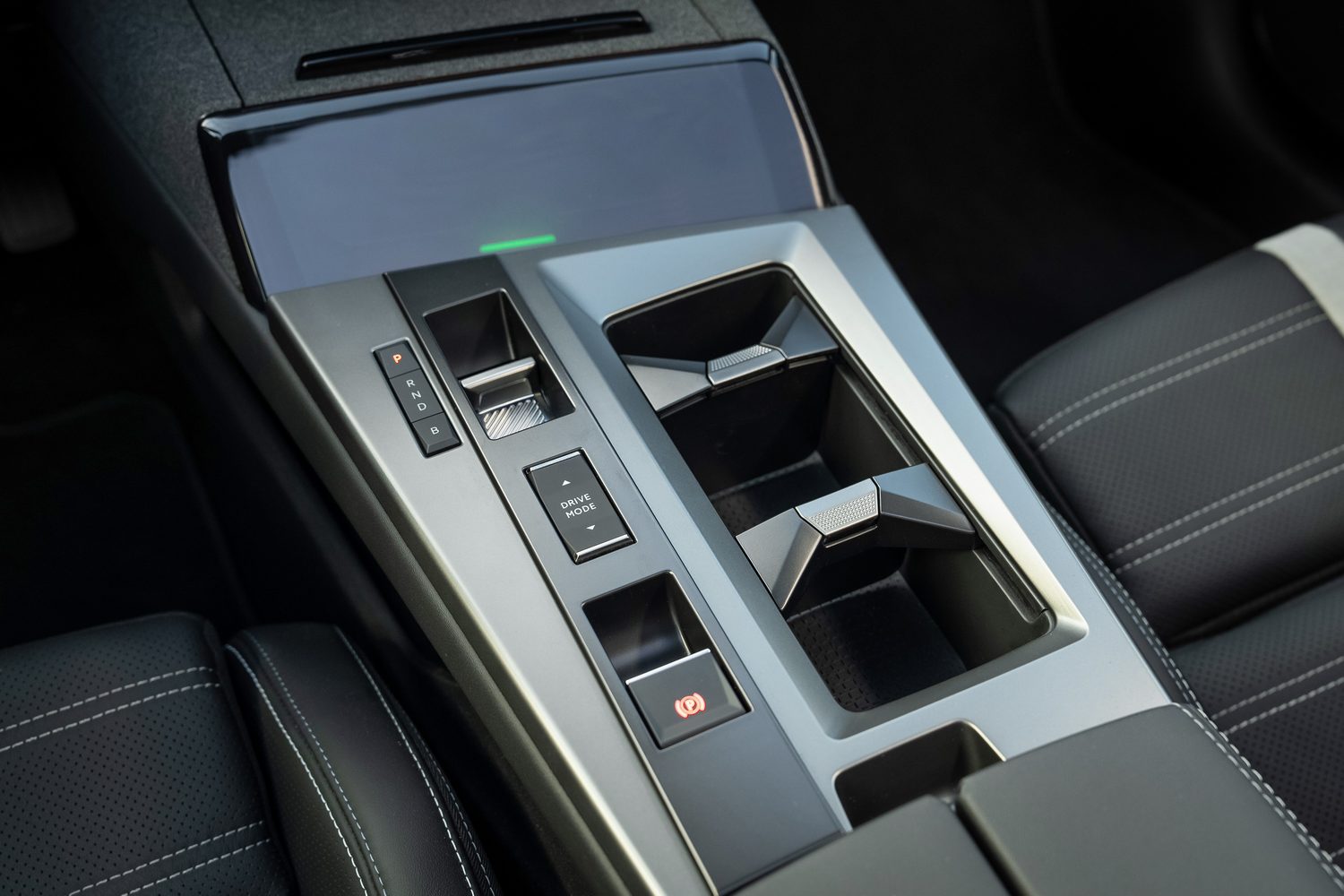
The software includes ChatGPT artificial intelligence, but that doesn't stop the menu layout being rather fiddly, although there are three helpful physical shortcut buttons which bring you directly to the home screen, the climate control menu, or the vehicle functions page.
Thankfully, Opel has stuck with some proper physical buttons for the cabin temperature and fan speed, and there's also a volume knob for the stereo (an excellent high-end Focal system in our test car).
There are also steering-wheel controls for functions such as the adaptive cruise control, but oddly, while the slightly flattened wheel feels very good to hold, and is clearly made of high-quality materials, it just doesn't look all that good.
However, the rest of the cabin must surely be regarded as a success. Overall quality levels - bar the expected few panels of cheaper plastic - are very high, and the overall effect is one of classiness, although I do feel that some soft fabric panels to replace the hard sections on top of the dash would have given the Grandland more of a plush feeling. On the upside, all of the interior fabrics are made of recycled materials, which, along with the excision of chrome from the outside, is at least a step in the right ecological direction.
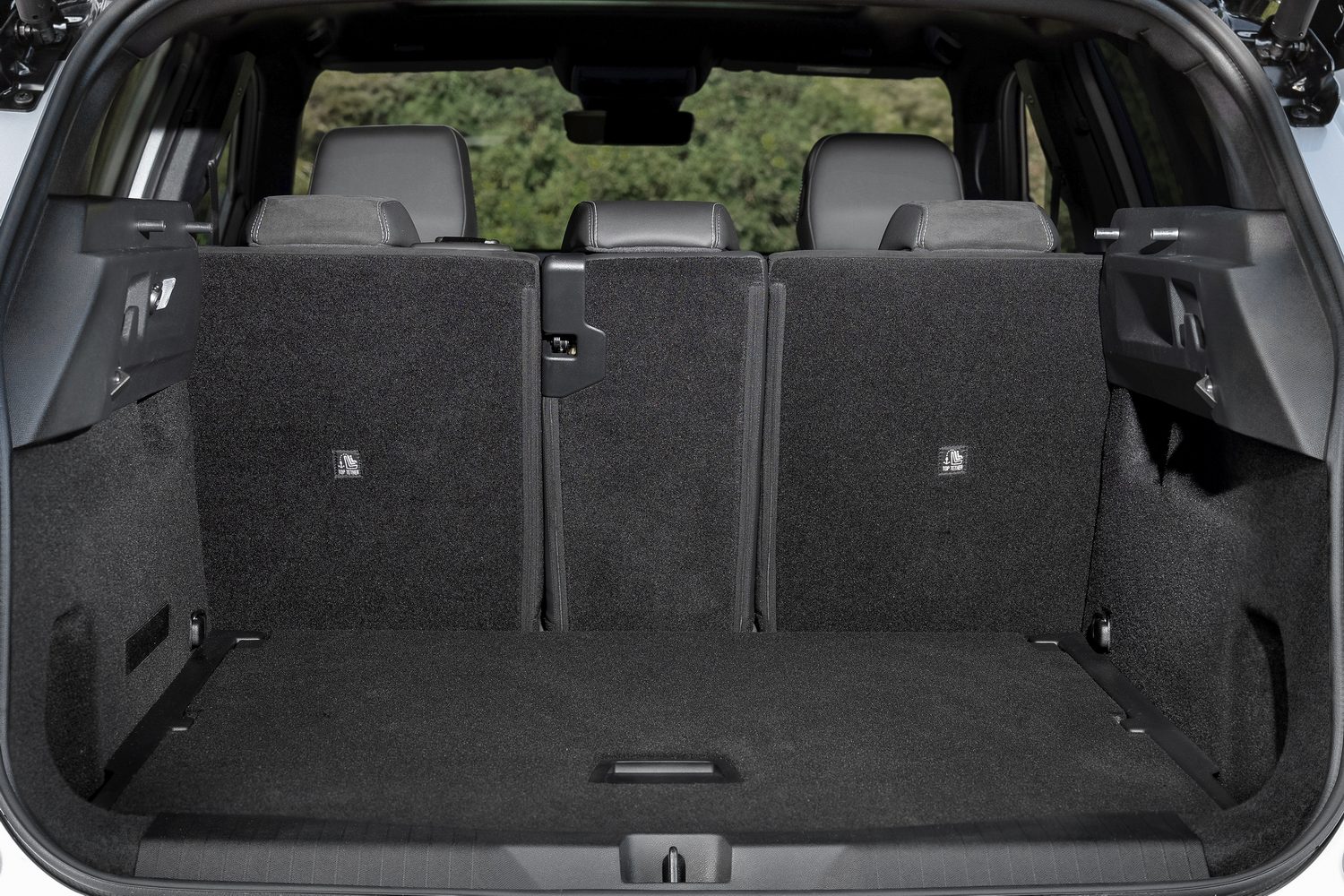
At 2,784mm, the Grandland's wheelbase isn't all that lengthy for a car of this size, but it's enough to give rear-seat passengers more than decent space so the Grandland feels spacious and airy, helped by large rear side windows and a flat floor that's common with the fully electric version.
This means that the centre rear seat is more useable than in many other cars, and it's been shaped so that someone sitting in the centre isn't as perched up as they would be in some rivals. The rear seats and cabin quality are pretty much on a par with the front, and the only quibble is that the optional glass roof and its retracting sun blind mean that headroom for very tall rear-seat passengers will be somewhat tight.
The boot is decent - 550 litres isn't the biggest around, but it should be plenty for most - and the load floor is flat. The rear seats split-fold 40:20:40, which maximises the Grandland's flexibility, although there is a slight lip between the boot floor and the backs of the folded seats. The seats-down capacity is a useful 1,645 litres.
Performance of the 2025 Opel Grandland PHEV
• Front-wheel drive with up to 195hp
• Official 87km electric range
• Refined at a cruise
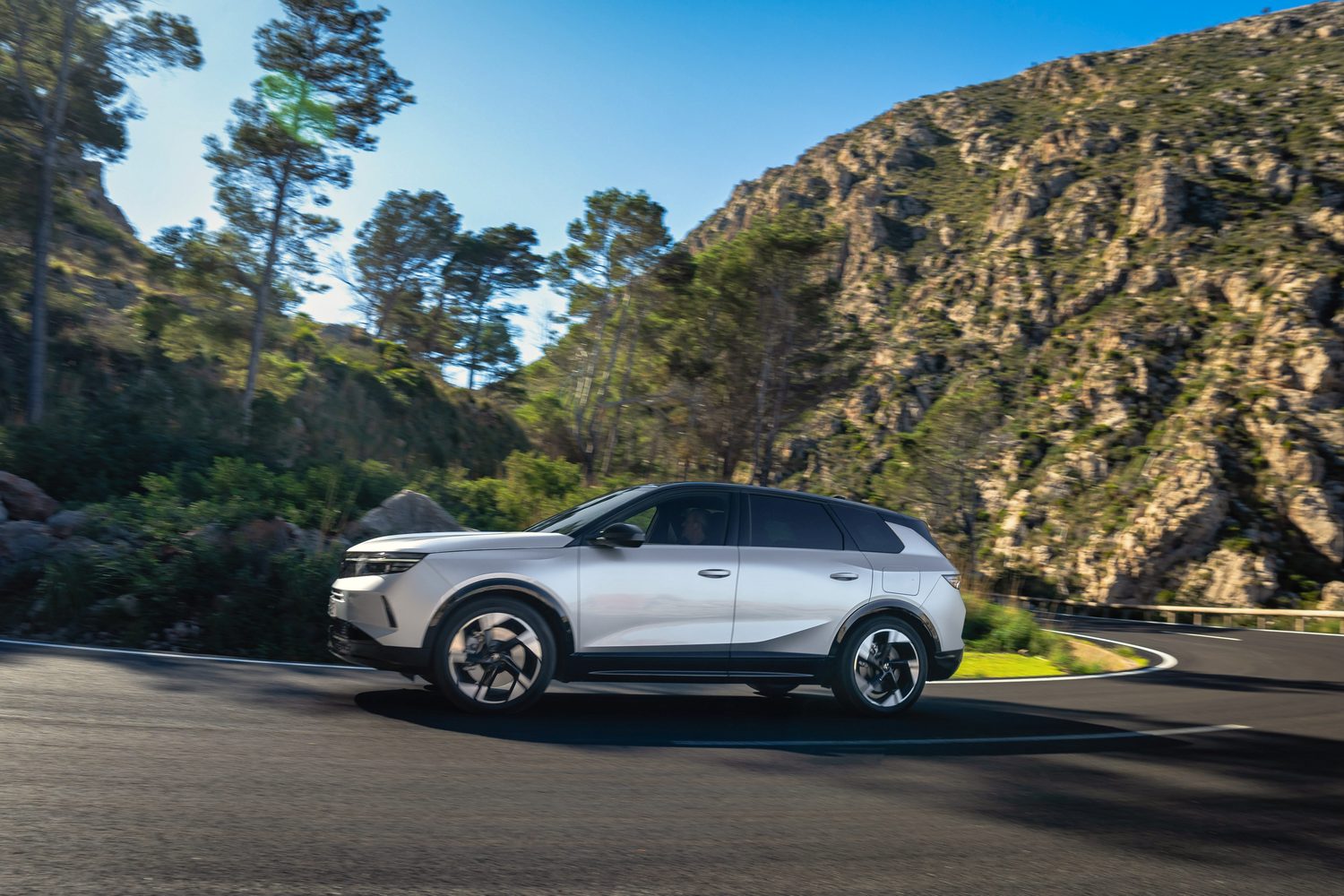
In spite of appearances, this is not the same plug-in hybrid system we've seen previously in many other Opel, Peugeot and Citroen models.
Opel says that this turbocharged 1.6-litre petrol engine has been enormously reengineered and essentially counts as a new powerplant altogether. It gains a variable-geometry turbocharger and an on-demand oil pump, which helps to improve its efficiency.
Working with the petrol engine is a 92kW electric motor, and there's a 17.9kWh lithium-ion battery pack stored under the floor in the space usually occupied by the electric Grandland's much bigger (73kWh) battery. The electric motor and the petrol engine both drive the front wheels through a new seven-speed, dual-clutch automatic gearbox.
Performance is very decent. The Grandland takes a claimed 7.8 seconds to accelerate to 100km/h from rest, which isn't bad for a family-sized SUV carrying almost 1,900kg of weight. From inside the Grandland, in either electric or hybrid settings, performance feels reasonably brisk, if still slightly south of outright quick.
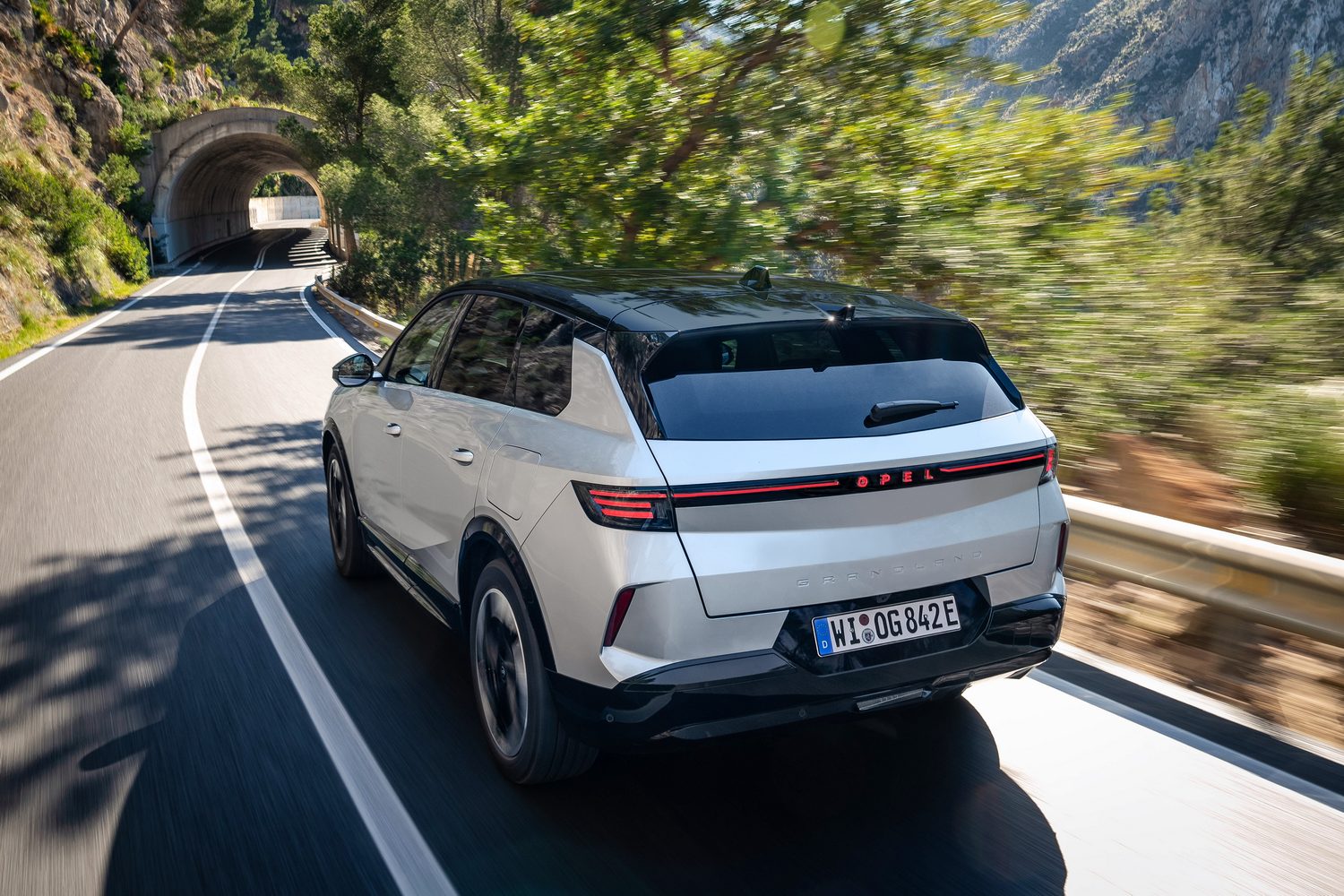
Then again, being outright quick isn't really in the remit of this Grandland. Doubtless there will be more powerful versions in the future, but this version of the big Opel is essentially set up to be comfortable. It uses something called 'selective frequency' dampers, which aren't electronically controlled but which automatically adapt to the road surface to a certain extent.
The Grandland's suspension seems very well balanced, with a firm sensation that's smoothed off by good damping control. Certainly, it's very comfortable around town and feels poised and well-controlled when cruising on faster-flowing roads as well
Where perhaps it's less well suited is on tight and twisty roads. Even in Sport mode, the steering is quite light and although it's fairly quick, the limiting factor is the Grandland's size - at almost two metres across the mirrors, it's a broad car and you really feel that on smaller roads.
The Grandland corners pretty well, but it's not an enthusiast's car in the least. Then again, perhaps it's expecting too much for a large, comfortable family SUV to be such a thing.
What is impressive is the refinement. Allied to the gentle ride quality and the comfortable seats, the Grandland is an exceptionally relaxing car in which to while away a journey. Wind and road noise are well contained, and even in electric mode it's hard to detect much in the way of any aural intrusions.
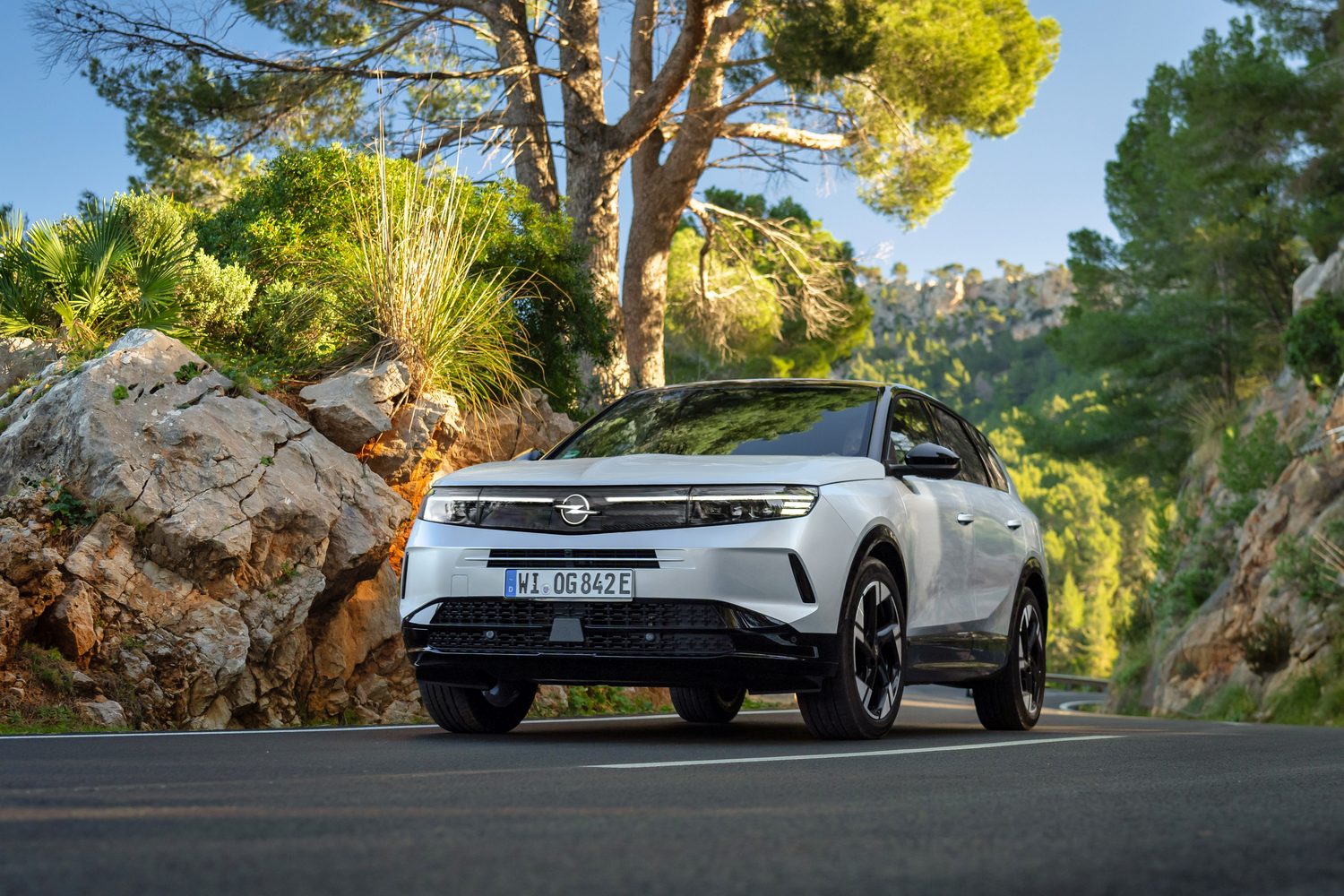
The thing is, can it really be a long-range cruiser if it's a plug-in hybrid? Previous experience with most plug-in hybrids, especially large SUVs, indicates that they're just too thirsty on long runs.
However, the Grandland seems to do well here too. Against an official 87km range on one charge we were easily able to squeeze around 70km from the Grandland's battery before it cried enough. When it did so, and the petrol engine kicked in - with a pleasant four-cylinder snarl at higher rpm as it happens - fuel consumption obviously started to tick up, but it never became unreasonable during the course of our test drive, which took in a mixture of city streets, motorway and twisty mountain roads.
Opel claims that, when running with a flat traction battery, the Grandland should achieve around 6.8 litres per 100km, and that seems realistic. Indeed, if you're starting your journey with a fully charged battery and travelling for, say, 200km, you might even do a little better than that. Opel says that on a fully charged battery and a full 55-litre fuel tank you can run for 900km without stopping.
Even better than that, in chilly January conditions, a team of Opel engineers took a fully fuelled-and-charged Grandland PHEV out for a long spin and managed to keep it going for 1,115km before having to stop for fuel. OK, so few of us can drive with the delicacy of an Opel engineer, but it certainly suggests that the Grandland can achieve decent all-round efficiency figures.
Annoyingly though, you can only charge the Grandland's hybrid battery at 7.4kW on AC power. While that does mean you can charge in less than three hours at home or at work, increasingly there are rival products which can fast-charge at up to 50kW on DC chargers. While this isn't cheap, it does at least mean that you can top up your battery charge on a longer journey to make more use of electric power.
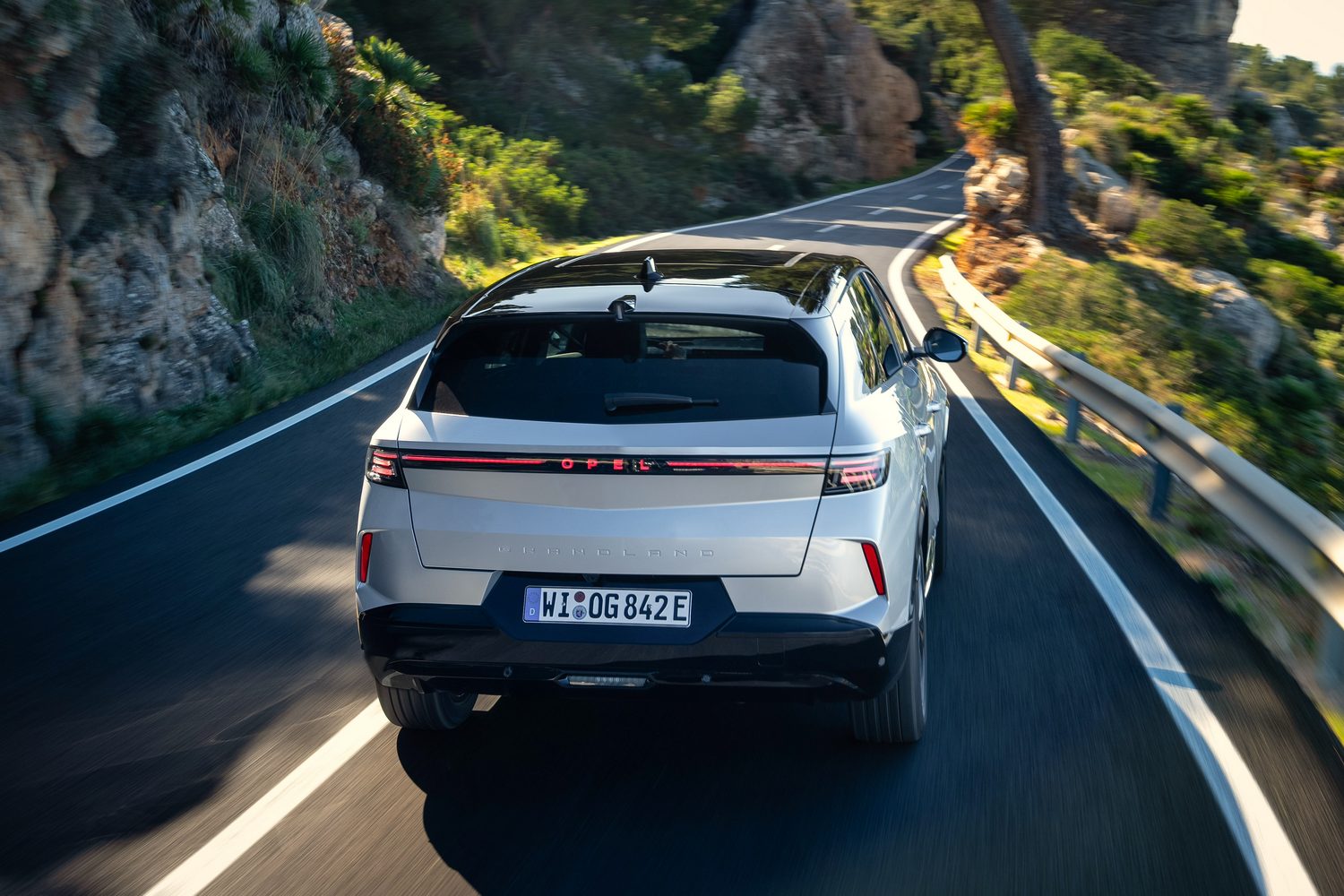
One thing we do have to mention through is that our test car actually broke down. There wasn't any warning of an upcoming failure - the car just displayed a 'traction fault' message on the dash and lurched to a halt. While Opel hasn't yet confirmed to us the nature of the failure, given that the car's systems were still running - the ignition was on, and the touchscreen still worked - it seemed like a sensor failure which was tripping out the broader system.
Now, this is not us having a dig at Opel, nor are we trying to suggest that one technical failure for one car means that the Grandland range as a whole is unreliable. In fact, Opel has a good reputation for reliability and quality. Equally, all cars can develop faults, and that's why we have roadside recovery and warranties. We simply mention it in the interests of full disclosure.
Running Costs of the 2025 Opel Grandland PHEV
• Eight-year warranty for the battery
• Potential for cheap commuting
• Discounts on servicing
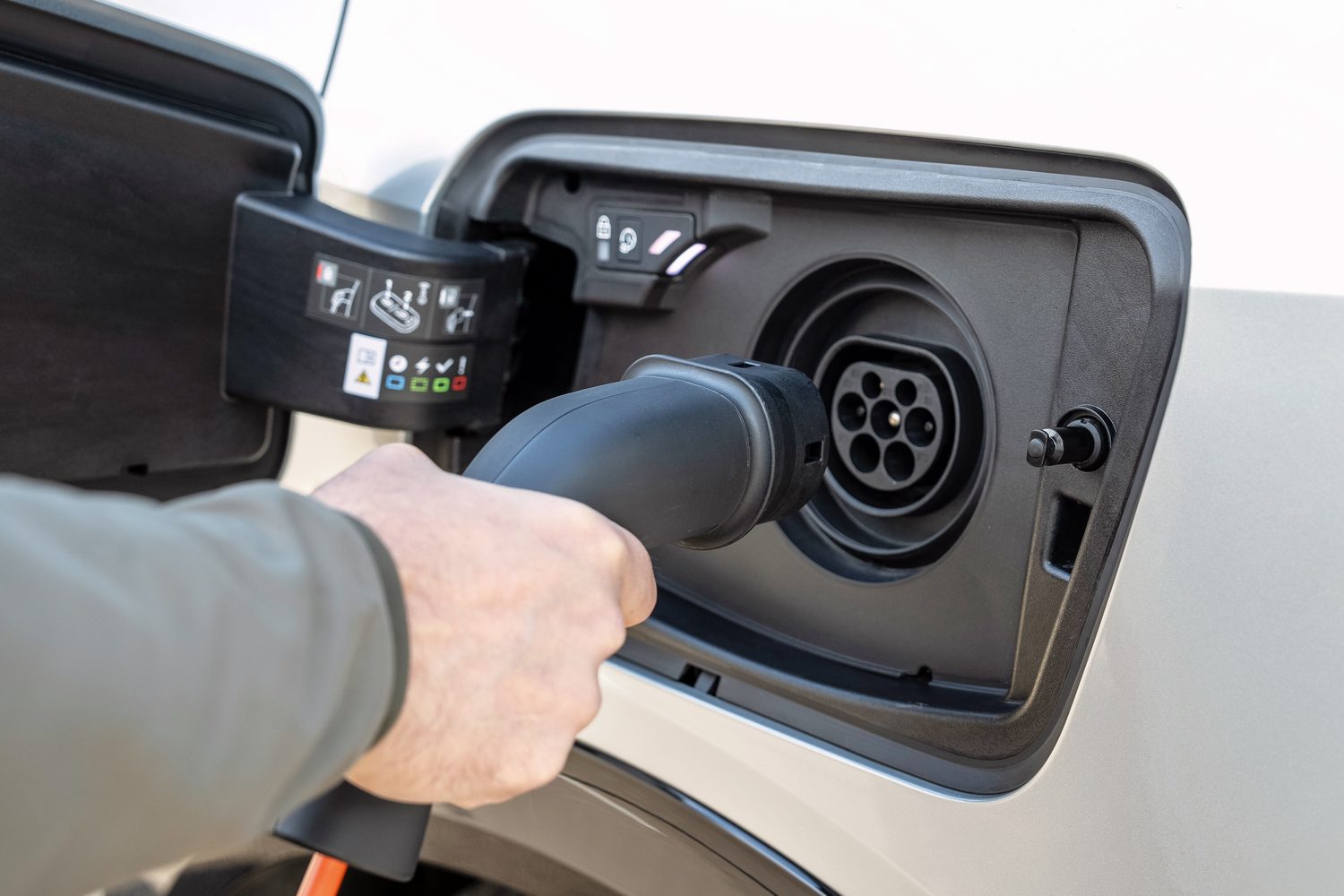
Given the fact that the Grandland PHEV seems to be able to deliver a solid 70km or so on a full charge of its battery, if you can charge at home on cheap night-rate electricity then there's the clear potential for some cheap commuting.
Fully charging on the cheapest night rate electricity will cost you around €2 a time, and that 70km should be enough to cover most people's daily school, shopping and commuting mileage. Then there's the prospect of covering longer journeys without relying on currently unreliable, sparse and expensive public charging, and if the Grandland really can hit its 6.8 litres per 100km figure on long runs, then it won't be far off the sort of fuel economy we'd expect to see from a comparably sized diesel or non-plug-in hybrid SUV.
As standard, the Grandland PHEV comes with a three-year warranty, up to a maximum of 100,000km, but the battery's covered for up to eight years and 160,000km.
As far as servicing is concerned, Opel currently has a 'Service Club' subscription offer, which can get you discounts of between 5 and 20 per cent on parts and servicing. There's also a service plan, the cost of which can be rolled into the car's finance package, which covers all regular servicing needs for the first three years.
Irish Pricing & Rivals of the 2025 Opel Grandland PHEV
• Irish pricing not yet announced
• Likely to be the most expensive Grandland
• More affordable model on the way

We don't know pricing for the Grandland PHEV in Ireland just yet, but it looks highly likely that it will be the most expensive model in the lineup when it arrives later this year. In the German market, the PHEV is priced more or less exactly halfway between the entry-level hybrid and the more expensive electric version, but that's because Germany binned all of its electric car purchase incentives, which has pushed up EV prices there.
In Ireland, we still have both a VRT rebate and the SEAI grant of up to €3,500 for an electric model, so the equation is reversed and here, the Grandland Electric is the cheapest model in the range, starting from €39,065.
For us, given that plug-in hybrids don't enjoy any tax breaks, the Grandland PHEV will be the most expensive model in the lineup, not least because at first it will only come in range-topping GS trim. It's likely that the price tag will sit at around €47,000 or so, possibly a bit higher than that.
However, that should change in the coming months, as Opel Ireland intends to introduce a 'mid-grade' Elegance model, between the SC (which the PHEV Grandland won't be available in) and the top-spec GS, which should bring the price down a little. In Europe, the PHEV only comes as a GS.
The Grandland PHEV will be up against some very talented competition in this section of the market, not least the ageing (and due for replacement soon) Toyota RAV4 PHEV, plug-in hybrid versions of the Hyundai Tucson and Kia Sportage, the newly-arrived Cupra Terramar and the Volkswagen Tiguan, both of which can go considerably further on one charge of their batteries than the Opel.
Standard spec for the Grandland GS includes the HD LED headlights, the 16-inch infotainment screen, 19-inch alloys and the black contrast roof.
Verdict - Should You Buy the 2025 Opel Grandland PHEV?
Yes, I reckon you should. It's Opel's most impressive new model for a while now and feels like both a truly modern car and a car that's distinctively an Opel, rather than being obviously a spinoff of other Stellantis group products. It's smooth and refined to drive, and if the sort of efficiency we've seen on our international test drive can be replicated at home, it'll be affordable to run.

FAQs About the 2025 Opel Grandland PHEV
Is the Grandland bigger than a Qashqai?
Yes, it is. The two cars aren't wildly divergent in size terms, but the Opel is a little broader and has an extra 50 litres of boot capacity.
Who makes the Opel Grandland?
Well, Opel does obviously, but of course it's not as simple as that. The Grandland is built by Opel in Germany (at its factory in Eisenach) but Opel is part of the broader Stellantis group, one of the world's biggest car-making conglomerates, which includes such brands as Peugeot, Citroen, Fiat, Opel's sibling brand Vauxhall, Abarth, Jeep, Alfa Romeo, DS and Maserati. The Grandland is built on the new STLA-Medium platform which will be shared across pretty much all Stellantis brands eventually.
How many child seats fit in the back of the Opel Grandland PHEV?
The Grandland PHEV has three ISOFIX points, with two in the outer back seats and one in the front passenger seat. Plus, the centre rear seat is just about wide enough to be able to squeeze in a smaller booster cushion, anchored by the seatbelt.
Has the Opel Grandland been assessed for safety by Euro NCAP?
No, it hasn't yet and neither has the related Peugeot 3008 nor 5008. It's hard to imagine any of these models scoring less than five stars though, given their extensive list of standard safety equipment.
Want to know more about the Opel Grandland PHEV?
Is there anything else you'd like to know about the Opel Grandland PHEV? Or anything you feel we haven't covered here? Then just head over to our Ask Us Anything section and, well, ask us anything. It's a free service and we'll do our best to answer your questions.

